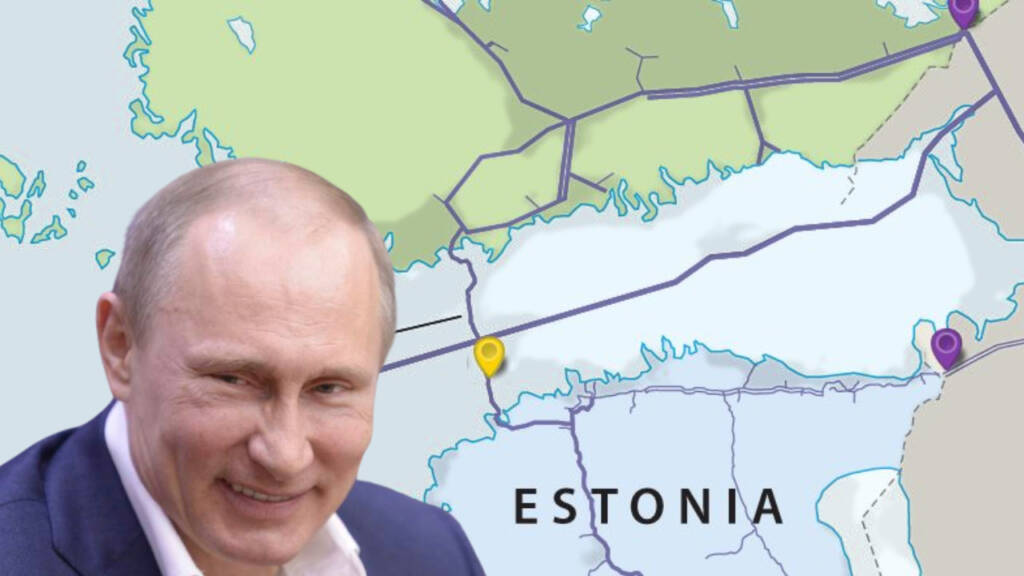One year ago, Russia faced a devastating blow when its vital project, Nord Stream 2, was deliberately destroyed. This act shattered any hope for a potential reconciliation between the EU and Russia, as energy stood as the sole connection that could have facilitated such a revival.
Russia swiftly pointed fingers at the West, while the Western nations, in their typical fashion, shifted the blame back onto Russia, offering excuses. However, Seymour Hersh’s investigative report on the sabotage revealed the truth: it was a planned effort by the EU and the US. This revelation remained buried for almost a year, but now, a fresh act of sabotage has left the EU in shock.
On the fateful night of October 8, at 2 a.m. local time, the Balticconnector pipeline experienced a drastic plunge in pressure, as reported by Estonian gas grid operator Elering. The pressure plummeted from 34.5 bar to around 12 bar, and within the span of an hour, it further decreased to a mere 6 bar.
Baltic Connector Offline: What Went Wrong!
These alarming figures strongly indicated a significant leak, suggesting that the pipeline’s contents had seeped into the ocean. Immediate action was taken; the pipeline’s valves were promptly shut to prevent further gas leakage.
The Balticconnector pipeline, spanning 77 kilometers across the Gulf of Finland, links Inkoo in Finland and Paldiski in Estonia.
Operated jointly by Estonian electricity and gas system operator Elering and Finnish gas transmission system operator Gasgrid, it can transport up to 7.2 million cubic meters of gas per day bidirectionally. The incident disrupted the transportation of approximately 30 gigawatt hours (GWh) of gas per day from Finland to Estonia.
Potential causes, including sabotage, are under investigation, and repairs might extend into months if a puncture is confirmed, according to Gasgrid.
The recent sabotage has placed the EU in a precarious situation, prompting discussions on this unexpected event. The EU initially pointed fingers at Russia for the Balti-connector collapse, echoing concerns voiced by Finnish officials who suspected sabotage.
Read More: An energy-secured Germany blames US for Nord Stream sabotage for the first time
Russia’s The Culprit: It Could Be
This development has raised concerns within NATO, especially considering the proximity to the first anniversary of the Nord Stream 2 sabotage. NATO has vowed to retaliate against Russia if this attack is proven intentional. Meanwhile, Russia’s response is ambiguous; they neither confirm nor deny involvement.
Kremlin, expressed concern over the damage to the Balticconnector gas pipeline, calling it disturbing. Dmitry Peskov, Kremlin spokesman, stated that while he lacks technical details and information from Russian special services, the news is deeply troubling, but he stressed that the US did the same with Nord Stream almost a year ago.
The lack of a clear denial or confirmation from Russia adds complexity to the situation, leaving the international community on edge and demanding a thorough investigation. The impact on the EU is concerning. While both countries involved have arranged alternative fuel sources to cover winter demand, the disruption caused by the Balticconnector hit poses a significant problem.
The EU now faces potential troubles as this incident has disturbed the existing pipeline network. This disruption is likely to lead to an increase in electricity costs due to limited supplies, exacerbating the ongoing energy crisis that has troubled Brussels for the past 1.5 years. The sudden interruption raises suspicions, pointing fingers at Russia.
Read More: The secret European ally behind ‘US’ Nord Stream Sabotage’ – finally unveiled!
The situation is akin to someone touching and hitting a nerve in a human body, causing it to crumble entirely. This is the current state of the EU without the Balti Connector. The EU must now grapple with this crisis, considering its implications on energy security and the economic well-being of its member states.
Watch More:
